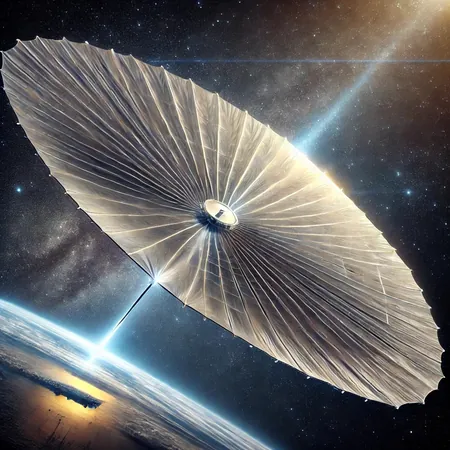
The Future of Space Travel: Can Light Sails Propel Us to Other Stars?
2024-11-17
Author: Siti
The Breakthrough Starshot Program
As humanity sets its sights on the stars, the Breakthrough Starshot program is poised to revolutionize interstellar travel by utilizing innovative light sail technology. The ambitious initiative aims to reach Alpha Centauri, our closest star system, in a matter of decades, thanks to ground-based lasers that will propel small, reflective sails to astonishing speeds—up to an impressive 20% of the speed of light.
The Right Materials for Light Sails
A critical element of this mission is the choice of material for the light sails, which must balance extreme lightweight characteristics with the ability to resist intense heat and radiation generated by the powerful lasers. Recent research from a team at the Karlsruhe Institute of Technology in Germany has presented exciting developments regarding the materials that may offer the best performance for these sails.
Core-Shell Structures and Mie Theory
The researchers focused on a concept known as core-shell structures, which consist of spherical particles made up of two different materials. Underlying their investigations was Mie Theory, originally proposed by physicist Gustav Mie in 1908, which explains how particles scatter electromagnetic waves. By experimenting with materials such as aluminum, silicon, and silicon dioxide, the team discovered that sails with a specific combination of silicon and silicon dioxide provided impressive reflective properties and accelerated efficiently under laser propulsion.
Challenges of Relativistic Speeds
The potential for light sails to operate at relativistic speeds presents not only thrilling opportunities but also daunting challenges. As speeds approach that of light, phenomena like time dilation—where time flows differently for the traveler compared to observers on Earth—becomes relevant. This means that for the spacecraft's tiny sensors, the expedition may feel minimal, despite the years passing on our planet.
Risks and Concerns
However, the risks are substantial. Spacecraft navigating at these speeds are vulnerable to collisions with tiny particles, which could be catastrophic. Moreover, increased radiation exposure necessitates robust shielding measures to safeguard the onboard equipment.
The Future of Light Sail Technology
While the research regarding core-shell materials is still emerging, the findings contribute significantly to our understanding of light sail technology. The advancements in materials science could pave the way for experimental trials, pushing us closer to a reality where exploring distant planets, searching for extraterrestrial life, and expanding human presence across the cosmos may no longer be a distant dream.
A Leap to the Stars
As the journey into interstellar space continues to take shape, the race to identify the perfect material for light sails could very well determine the future of space exploration, laying the groundwork for humanity’s next giant leap: to the stars! Will we finally materialize the dream of reaching Alpha Centauri? Only time—and innovative science—will tell!






 Brasil (PT)
Brasil (PT)
 Canada (EN)
Canada (EN)
 Chile (ES)
Chile (ES)
 España (ES)
España (ES)
 France (FR)
France (FR)
 Hong Kong (EN)
Hong Kong (EN)
 Italia (IT)
Italia (IT)
 日本 (JA)
日本 (JA)
 Magyarország (HU)
Magyarország (HU)
 Norge (NO)
Norge (NO)
 Polska (PL)
Polska (PL)
 Schweiz (DE)
Schweiz (DE)
 Singapore (EN)
Singapore (EN)
 Sverige (SV)
Sverige (SV)
 Suomi (FI)
Suomi (FI)
 Türkiye (TR)
Türkiye (TR)